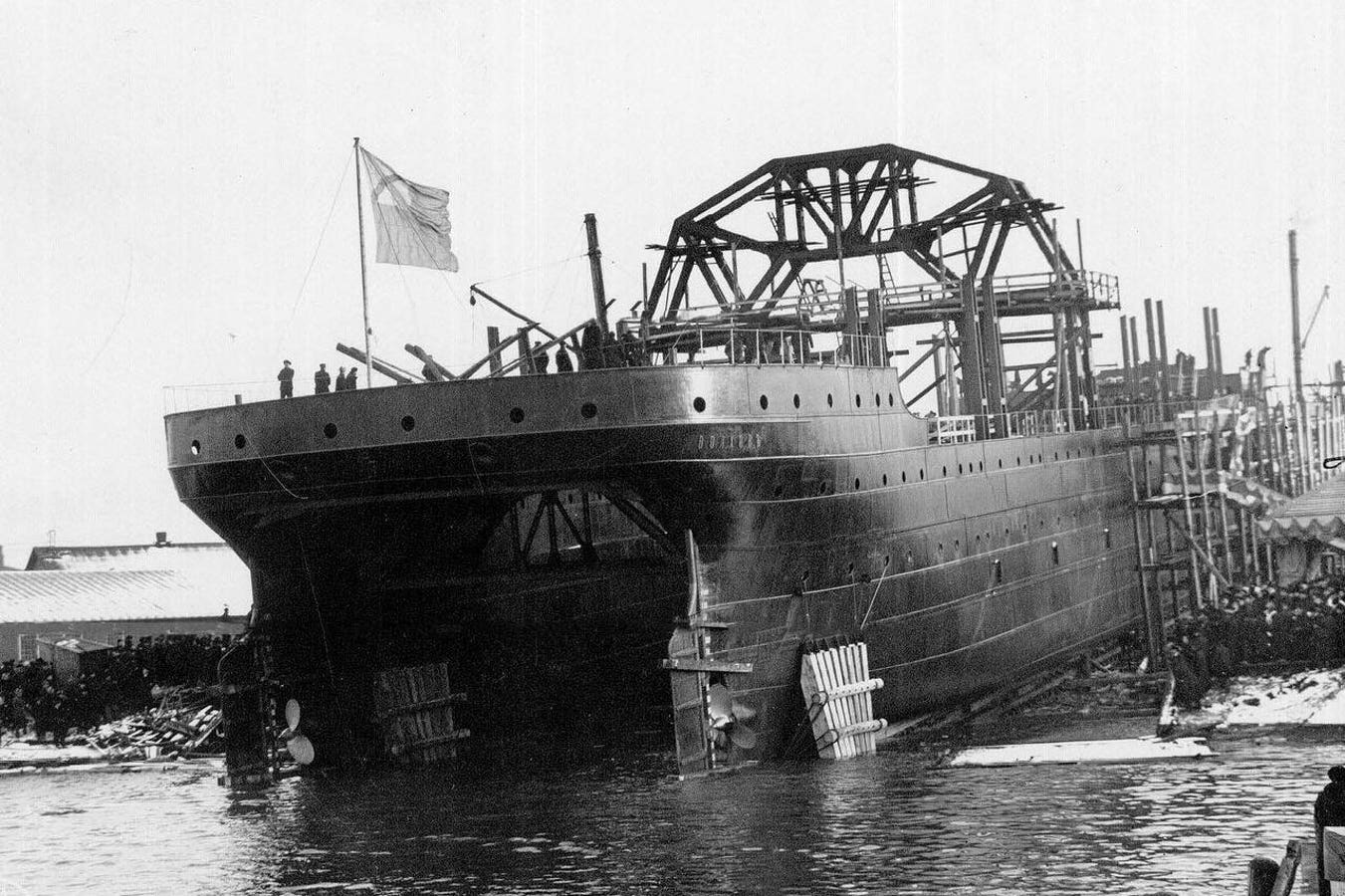The Russian navy rescue vessel Kommuna launched in 1913. She served with the Russian imperial navy, the Soviet navy and, finally, the Russian navy—and survived two world wars. She is, by far, the oldest active warship in the world with a front line role.
To call the 111-year-old vessel lucky is an extreme understatement. But that luck may finally have run out. On Sunday, the Ukrainian defense ministry claimed its forces hit the 315-foot Kommuna with a locally-made Neptune cruise missile while the ship was moored in Sevastopol, in Russian-occupied Crimea.
It’s unclear how bad the damage is, but even moderate damage could put the aged vessel out of action for months or years. “Another bad day for the Russian Black Sea Fleet,” the ministry in Kyiv quipped.
It’s an especially bad day for the Black Sea Fleet’s submarine flotilla, which counts on Kommuna for vital support.
The Black Sea Fleet joined Russia’s wider war on Ukraine in February 2022 with around three dozen large warships, including Kommuna. In 26 months of hard fighting, the Russian fleet has lost—to Ukrainian rockets, cruise missiles, drone boats and sabotage—nearly a third of the pre-war vessels.
The losses include a cruiser, a submarine, a supply ship, several patrol boats, two missile corvettes and at least six landing ships—not to mention one of the fleet’s rare Beriev Be-200 flying boats. But the damage to Kommuna might sting the most.
The Kremlin can’t immediately replace any of the big ships the Black Sea Fleet has lost to Ukrainian action because there’s just one way into the Black Sea for any ship that can’t navigate the shallow Volga and Don Rivers into the Sea of Azov and the adjacent Black Sea: the Bosporus Strait, which connects the Black Sea to the Mediterranean Sea. Turkey controls the Bosporus and, as a matter of policy, does not admit any foreign warships to pass through the strait during wartime.
Kommuna is irreplaceable in a different sense. She’s a naval time traveler from a bygone era. A museum exhibit that, incredibly, is still in use generations after other vessels her age have rusted away to nothing.
And in losing Kommuna—temporarily or permanently—the Black Sea Fleet also loses a critical capability. Kommuna is a twin-hull catamaran: basically, a ship with a big open space in the middle through which her crew can launch and recover miniature rescue submarines or lift objects such as pieces of sunken vessels from the seafloor.
When a pair of Ukrainian missiles sank the Russian cruiser Moskva in the western Black Sea in April 2022, Kommuna and her AS-28 mini-sub reportedly helped recover parts of the wreck—and the bodies of the cruiser’s crew.
This rescue and recovery capability gives the Black Sea Fleet’s submarine force—which is down to four Kilo-class submarines after a Ukrainian missile blew up a fifth sub in Sevastopol back in September—the confidence to sail and fight in increasingly dangerous waters.
Yes, Kommuna is a precious historical artifact. No, that doesn’t give her special status in a brutal war zone. “Objectively she is a legitimate target,” naval expert H.I. Sutton noted.
Without Kommuna, the surviving Black Sea Fleet subs could sail without support. And if one of the subs has an accident and sinks to the seafloor, there may be no way for rescuers—who are accustomed to staging from Kommuna—to reach the survivors.
Update: Satellite imagery from after the missile raid doesn’t show any obvious major damage to Kommuna, The War Zone reported.
Sources:
1. Ukrainian defense ministry: https://twitter.com/DefenceU/status/1782060240655077557
2. Olga Lautman: https://twitter.com/OlgaNYC1211/status/1782098766968844672
3. H.I. Sutton: https://twitter.com/CovertShores/status/1781974126410060242
Read the full article here





